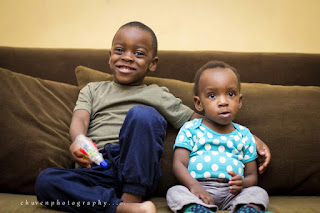Tuesday, May 9, 2017
Fostering teamwork among kids in the home
Toddlers are never too young to learn about teamwork. I have a baby who is almost two years old, and when we have tasks to do, I try to engage him to give him that feeling of inclusion. It starts with little chores around the house like putting the shoes in the shoe rack or the toys in the toy box while mummy is busy sweeping the parlour or folding the freshly washed clothes from the laundry basket. As a mother, I know that keeping the house clean is a team effort.
Teamwork is all about harmonising team members’ strengths to achieve a common goal. It is a necessary skill for getting along with others outside the home and becoming a success in one’s career. However, it’s not right to leave the teaching of teamwork to educational institutions. The home is the first place where important, personal values that are beneficial to the society as a whole must be learned. And when everyone in the home pitches in, it makes the burden of running the home so much more easily managed.
Teaching teamwork to kids is important because they get to learn listening skills, how to communicate effectively, respect for other people’s values/opinion, it builds their confidence, gives them a sense of ownership in a shared vision, teaches them how to productively resolve conflict, and how to mentor or be mentored.
Here are some team building activities to engage in:
1. Playing indoor team building games such as working on an art and crafts project like doing a painting or making useful objects. Just watch Art Attack on Disney Jnr channel for ideas on crafts to do with kids. Others include fixing a puzzle, playing hide and seek, juggling balloons, playing board games, etc.
2. Working on family projects like planning a trip together or deciding on how to spend recreation times, trying to keep the house clean, embarking on reading challenges, etc.
3. Engaging in outdoor fun sports or games like blindfold obstacle games, egg racing relay, etc.
Participating in team building activities help to show if there is a trust gap in the team; if everyone is on the same page about what is expected of them. It also frees children to question the order of things and think individually for themselves when they see the outcome of their decisions with regards to the suggestions offered by others. For instance, when you tell children, don’t do this; they want to find out for themselves why. When they discover it was not beneficial in any way, they become willing to listen to reason and obey. I talk to my son like he is an adult; I explain why we do things, so he understands that he has a responsibility to carry out and has to be accountable as well.
Let’s intentionally build the next generation starting from home.
This article was inspired by a future project.
Subscribe to:
Comments (Atom)
It has been ages since I used this blog to write anything. This doesn't mean I haven't been writing. But rather, I have been writing...

-
Being Mummy and Me [The tales of Motherhood] is a non-fiction book on motherhood and balancing individuality in different facets of life. ...
-
This 2015 historical drama thriller featuring Tom Hanks and directed by Steven Spielberg is about the Cold War between America and the Sov...
-
Fixing Cornrows with Attachments, French Braids, Weave-on and Dreads have become a vital part of the modern day African woman’s fashion. Eve...




